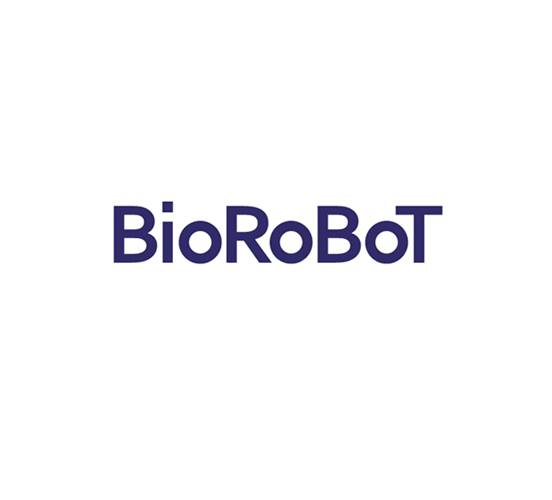The word ‘robot’ evokes images of ανθρώπινος-like manmade metallic machine (humanoid) designed and programmed to automatically perform some tasks for us. However, robots (or bots) can be of any shape or size and can be made of any material (including biological materials such as living cells) depending on design and functional requirements. It may not have any physical form as in the case of Siri or Alexa. Τα ρομπότ είναι ορθολογικά σχεδιασμένα τεχνουργήματα ή μηχανές που εμφανίζουν αυτονομία και εκτελούν συγκεκριμένες εργασίες.
Biological robots (or biobots) use living κυττάρων or tissues as fabrication material. Like all robots, biobots also are programmable machines, display autonomy and perform specific tasks. These are a special class of active living and motile synthetic structures.
Οι ζωντανοί ιστοί καθ 'εαυτόν, are not robots. They are parts of animals. The living κυττάρων become robots when they are liberated from the normal constraints and programmed into desired form and function by artificially combining and shaping the cells to display specific behaviour.
Ξενόμποτ ήταν τα πρώτα πλήρως βιολογικά βιομποτ που δημιουργήθηκαν στο εργαστήριο το 2020 χρησιμοποιώντας τα κύτταρα ωαρίων από τα έμβρυα ενός είδους βατράχου που ονομάζεται Xenopus laevis (εξ ου και το όνομα Xenobots). Ήταν ο πρώτος ζωντανός, αυτοεπιδιορθούμενος, αυτοαναπαραγόμενος τεχνητός οργανισμός. Τα ζωντανά κύτταρα χρησιμοποιήθηκαν ως δομικά στοιχεία που απελευθερώθηκαν από τους φυσιολογικούς περιορισμούς του υπόλοιπου εμβρύου για να δημιουργήσουν μια νέα μορφή τεχνητής ζωής της οποίας η μορφολογία και τα χαρακτηριστικά «σχεδιάστηκαν» τεχνητά. Έτσι, το Xenobot ήταν ένας ζωντανός συνθετικός οργανισμός. Η ανάπτυξη Xenobots έδειξε ότι τα κύτταρα που προέρχονται από ένα έμβρυο αμφιβίων μπορούν να προγραμματιστούν στην επιθυμητή μορφή και λειτουργία απελευθερώνοντας φυσικούς περιορισμούς. Ωστόσο, δεν ήταν γνωστό αν θα μπορούσαν να δημιουργηθούν βιορομπότ από μη αμφίβια ή ενήλικα κύτταρα.
Scientists have now reported successful construction of biobots using adult cells from non-embryonic ανθρώπινος tissue with capabilities beyond Xenobots. This biobot has been named ‘Anthrobots’ because of its ανθρώπινος προέλευση.
Since Xenobots were derived from amphibian embryonic cells by moulding cells individually, the research team began with testing if ability to give rise to biobots is limited to these amphibian cells or, other non-amphibian, non-embryonic adult cells also can generate biobots? Further, if the seed cells need to be necessarily sculpted individually to generate biobots or if coaxing of initial seed cells also can lead to self-construction of biobots? For this, instead of embryonic tissues, the researchers used adult, somatic cells derived from ανθρώπινος lung epithelium and were able to generate novel, multicellular, self- constructing, motile living structures without manual sculping or using any external form-giving machinery. The method used is scalable. Swarms of biobots in parallel were produced which moved via cilia- driven propulsion and lived for 45–60 days. Interestingly, it was also observed that Anthrobots moved across breaks in neuronal monolayers and induced efficient healing of defects in vitro.
Η σύνθεση των Anthrobots is significant because it demonstrates that plasticity of cells to give rise to biobots is not limited to embryonic or amphibian cells. It has shown that adult somatic ανθρώπινος wild cells without any genetic modification can form novel biobots without any external form-giving machinery.
Το Anthrobots είναι μια βελτίωση σε σχέση με τα Xenobots και μια πρόοδος στη σχετική τεχνολογία που έχει σημαντικές επιπτώσεις στην παραγωγή πολύπλοκων ιστών για κλινικές χρήσεις σε αναγεννητική ιατρική. Στο μέλλον, μπορεί να καταστεί δυνατή η παραγωγή Anthrobots εξατομικευμένων για κάθε ασθενή και η ανάπτυξη τους στο σώμα χωρίς να προκληθεί καμία ανοσολογική απόκριση.
***
αναφορές:
- Μπλάκιστον Δ. et αϊ 2023. Biological Robots: Perspectives on an Emerging Interdisciplinary Field. Μαλακή Ρομποτική. Αυγ 2023. 674-686. DOI: https://doi.org/10.1089/soro.2022.0142
- Γκιουμουσκάγια, Γ. et αϊ. 2023. Motile Living Biobots Self-Construct from Adult Ανθρώπινος Somatic Progenitor Seed Cells. Advanced Science 2303575. published: 30 November 2023 DOI: https://doi.org/10.1002/advs.202303575
- Tufts University 2023. News – Scientists Build Tiny Biological Robots from Ανθρώπινος Κελιά. https://now.tufts.edu/2023/11/30/scientists-build-tiny-biological-robots-human-cells
- Ebrahimkhani Mo.R. και Levin M., 2021. Συνθετικές μηχανές διαβίωσης: Ένα νέο παράθυρο στη ζωή. iScience Perspective. Τόμος 24, Τεύχος 5, 102505, 21 Μαΐου 2021. DOI: https://doi.org/10.1016/j.isci.2021.102505
***






































